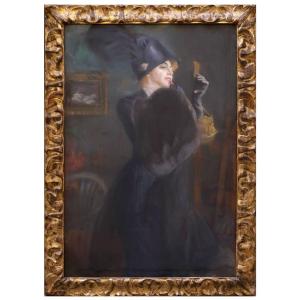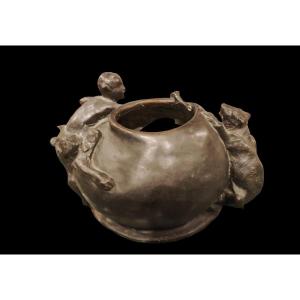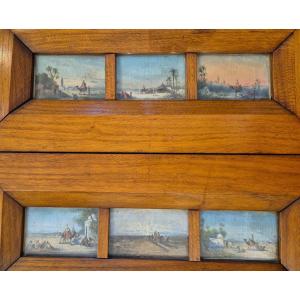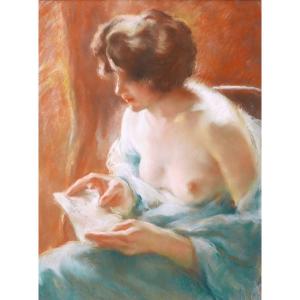it is a fine example of a deco style work closely linked to advertising, the area in which Bompard dealt
Luigi Bompard (Bologna, 8 September 1879 – Rome, 24 February 1953) was an Italian painter and illustrator.
The evolution of his illustrative technique has absolutely self-taught foundations, which found body and substance starting from 1902 in the influences of the bohemian artists belonging to the "Giambardi della sega" group, who met in Palazzo Bentivoglio. The Bolognese environment of the time, thanks to the large quantity of magazines that were published there, was particularly suitable for the activity of illustrator, to which Bompard dedicated himself and in which he put his qualities as a graphic designer to good use. Among the most important collaborations are those linked to Il Natale de la Lira and L'Italia Ride where he came into contact with artists of different backgrounds and experiences, such as Alfredo Baruffi, Franz Laskoff, Ugo Valeri, Augusto Majani. Also noteworthy are his activities in the field of poster design, to which he dedicated himself together with Marcello Dudovich. Alongside his activity as a graphic designer and illustrator, which allowed him to satisfy his economic needs, Bompard had a notable presence in the pictorial panorama of the time, as evidenced by the numerous participations in the France Prize (1901, 1902, 1903, 1905, 1907 and 1916), at the Venice Biennale (1905, 1912, 1920, 1926, 1928). Having moved to Rome in 1904, he took part in the Mostra di Rifiutati (1905), and that of the Society of Amateurs and Connoisseurs of Fine Arts (1906) and joined the GRIA (Gruppo Romano Incisori Artisti). In the years following 1906 he lived first in Paris, and then in Milan, where he moved in 1911. Here he collaborated on Illustrazione Italiana and La Lettura. After 1918 he returned to Rome and worked as an illustrator for magazines such as Il Travaso delle idee, Noi e il Mondo, Il Giornale della Domenica, La Tribuna, La Voce d'Italia, Il Corriere dei piccolo, Marc'Aurelio, Il Guerin Meschino . He died in the capital in February 1953 at the age of 73.
Anciente frame Bolohna XVIIIth Century
Feedback




























 Le Magazine de PROANTIC
Le Magazine de PROANTIC TRÉSORS Magazine
TRÉSORS Magazine Rivista Artiquariato
Rivista Artiquariato